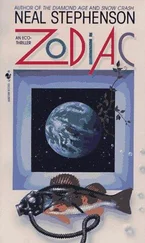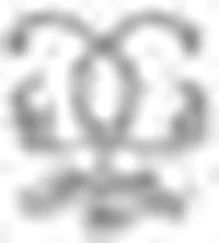Julia, the One, looked to make the best of a bad situation by endowing her offspring with qualities that would make them useful and important in spite of much smaller numbers. She had already expressed, during the Council of the Seven Eves, the idea that there was real value in the ability to envision possible futures. And she had linked it to leadership, or, failing that, to the ability to give useful advice to leaders. When that trait ran out of control and sought dark paths it led to depression, paranoia, and other forms of mental illness. The challenge then was to find a way of combining that trait with a more positive mentality. Julia’s research — and she did a lot of research — therefore tended to center on the history of sages, seers, ecstatics, shamans, artists, depressives, and paranoiacs throughout history, and the extent to which those traits could be localized to specific base pairs in their genomes and fostered by acculturation.
Historians had come along much later and developed their own vocabulary for telling the story of the succeeding five thousand years. The first pregnancies were called Gestations. Not counting the numerous miscarriages, there had been thirty-nine of them, distributed among the Seven Eves, before Camila, the last to stop bearing children, had finally gone through menopause. From these, thirty-five viable girls had resulted. Thirty-two had gone on to have children of their own. By then, Eve Moira had figured out how to synthesize Y chromosomes, and so some of the second generation had been male. The result, therefore, had been thirty-two Strains. Each of the seven new races had embodied more than one Strain. The Strains were recognizably different and yet clearly classifiable as belonging to one race or another, somewhat as East Africans differed from West Africans but still looked like Africans to Europeans.
“Correction” was the name given to the phase that had begun after the first round of Gestations, when Eve Moira had fixed errors that had led to several nonviable infants. In a sense, Correction went on continuously all through the first round of Gestations and began to taper off as the daughters of the Eves began to produce second-generation children. It faded into a next stage, Stabilization, which lasted through the following ten generations or so as Y chromosomes were patched up, lingering genetic mistakes were fixed, and members of different Strains began to interbreed to produce hybrids within their own racial groups. During this time the lessons of the black-footed ferret were put to use as various techniques were employed to increase heterozygosity.
In truth a vast library of human genetic sequences was available in digital form, and once they had survived the first few generations in Cradle, and trained hundreds of bright young people to be genetic engineers, they could, in theory, have resequenced the original human race from scratch. This was the sort of thing Eve Moira had done by synthesizing the first artificial Y chromosome. But it was not what they collectively chose to do. That choice was altogether cultural, not scientific. Decisions had been made in the Council of the Seven Eves. Races had been founded that were, by then, several generations old. They had begun to develop their own distinctive cultures. To undo those decisions by reverting to the “rootstock” human race was viewed almost as a kind of auto-genocide. The competition that had developed among the different races rendered it unthinkable. So the genetic records of rootstock humanity were put to work adding a healthy degree of heterozygosity back into the existing races, rather than trying to go backward.
Thus Stabilization, which had continued until about the twelfth generation, by which point even the Julian race had grown large enough to go on propagating through normal means without the need for lab-based adjustments.
Stabilization had blended into Propagation, the next phase generally recognized by historians, which was fairly self-explanatory: the descendants of the Seven Eves had continued to have sex with each other and make more babies. This had occupied much of the first half of the First Millennium and led to a condition of overcrowding so severe that it had made obligatory the formation of separate colonies away from Cradle. For there were other places, perhaps not quite so favored as Cleft, but still well suited for the building of new habitats. They had reached the point, by then, of being able to construct new machines for moving about in space. It was time. Or so insisted the descendants of the Four, who sensed that conditions had become inimical to them in the crowded precincts of Cradle. Camila had been frank about her strategy of making new humans well suited to life in confined spaces. She had succeeded in doing so. And once the early habitats of Cradle had grown crowded, her strategy had begun to look like a good one. Whether it was purely an expression of their own racial mythologies or a biological necessity, the Four had reached out and pioneered new habitats, at first in other locations on Cleft, later on other fragments of Peach Pit. The descendants of Aïda had done likewise, sometimes cohabiting with the Four, more often going it alone.
It wasn’t so much that Aïda had done things that couldn’t be undone as that she had said things that couldn’t be unsaid. In that sense her Curse had real effect. An individual Aïdan of the Second Millennium was the product of a mixed-race culture that was more than a thousand years old. He or she had grown up with persons of all races, loving some and hating others, getting on well, perhaps, with certain Teklans and Moirans while getting into fights with certain Aïdans. In terms of his or her own personal experiences, there was no reason to stick together with others of the same race. But each race did have an ineradicable narrative, by now encoded into a culture that had become ancient. The narrative of the Aïdans was that their Eve had spawned not just one race but a “race of races,” a mosaic, as proof that her children could do all that those of the other Eves could, and more. And if you were a descendant of Aïda, clearly endowed with genetic markers that she had chosen for that purpose, then the inexorable force of that narrative would drive you toward colonies populated largely or purely by other Aïdans.
As the Aïdans were less numerous than the descendants of the Four, their Second Millennium colonies had tended to be smaller and more Spartan, leading to a symbiotic relationship with the Camites, who tended to thrive in such environments. Aïdans built colonies but Camites made them work.
In any case, the formation of new colonies and habitats during the Second Millennium had led to a phase that the historians called Isolation: the formation of racially “pure” populations. Isolation led to Caricaturization: selective breeding, pursued consciously in some cases and unconsciously in others, that had the effect over many generations of intensifying racial differences. The example cited most often was a gradual change in eye color among Moirans. Eve Moira’s eyes had been hazel: relatively light in color by the standards of black people, but not all that unusual. By the end of the Second Millennium, many Moirans had eyes so pale in color as to appear golden in strong light. On the walls of the Great Chain’s fashion stores, blown up to ten times life size, Moiran fashion models still gazed at you through shockingly yellow, catlike eyes. Because pale eyes had been a distinctive characteristic of Eve Moira, it had become thought of as beautiful and desirable, and Moirans with pale eyes had found it easier to mate and reproduce, intensifying the trait over time, to the point of caricature. Kath Two herself, no model, was frequently complimented on the lightness of her eyes, which were closer to green than yellow. But modern, appearance-conscious Moirans were frequently startled when they saw photographs of their Eve with her eyes that were merely greenish-brown.
Читать дальше
Конец ознакомительного отрывка
Купить книгу





